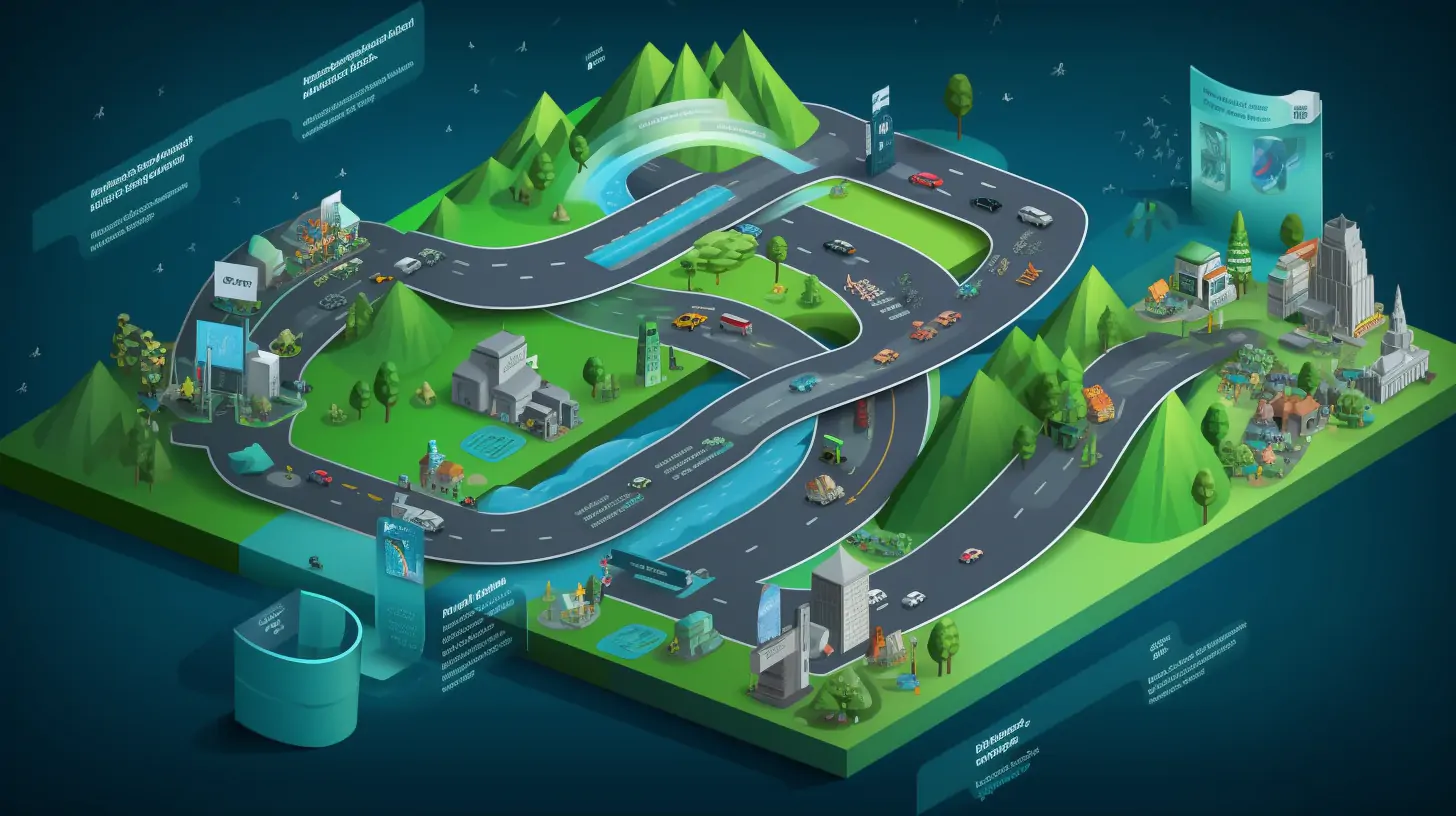Agile release planning is crucial for delivering valuable software products efficiently and effectively. This article summarizes key elements, strategies, and best practices for successful agile release planning.
Essential components include defining a clear product vision, creating and prioritizing a product backlog, breaking down features into user stories, conducting collaborative planning, and developing a balanced release plan. Effective product releases offer benefits such as faster time-to-market, increased customer satisfaction, and optimal resource utilization.
Balancing speed and quality, achieving stakeholder alignment, managing dependencies and risks, fostering cross-functional team collaboration, and incorporating feedback are critical aspects of agile release planning. Organizations should adopt agile principles, strategies, and best practices to optimize their product delivery process, align stakeholders, manage risks, enhance collaboration, and continuously improve based on feedback.
Embracing agile release planning is essential for staying competitive and meeting evolving customer demands in today's fast-paced software development landscape.
The Importance of Effective Product Releases in Agile Development
Agile Release Planning: Strategies to Optimize Your Product Delivery
The balance between speed and quality: best practices for agile release planning
Agile Release Planning: Bringing Stakeholders Together for a Successful Product Launch
Agile Release Planning: Tips for Managing Dependencies and Risks
Improve Collaboration in Agile Release Planning for Cross-functional Teams
The Role of Feedback in Agile Release Planning and Continuous Improvement
Understanding Agile Release Planning: The Definitive Guide
In the fast-paced world of software development, flexibility has emerged as a crucial success component. Agile approaches allow teams to react fast to changing requirements and provide clients with value on time.

Release planning, which ensures timely and successful product releases, is one of the most crucial elements of agile development. To assist you in streamlining your product delivery process and achieving your business objectives, this comprehensive reference analyzes agile release planning methodologies and best practices.
Key Elements of Agile Release Planning for Product Success
Several procedures are used in agile release planning to identify, rank, and schedule the delivery of product features. There are various crucial factors to take into account to succeed.
You must first thoroughly understand the product's vision and objectives. This entails ensuring everyone works toward the same objective and coordinating the development team with overarching corporate objectives. By developing a shared vision, the team may decide on the most crucial features and how they fit with the broader product strategy.
Also, a seamless and effective release planning process depends on solid communication and coordination amongst all stakeholders, including product owners, development teams, and customers. Open lines of communication and regular meetings make it easier to get feedback, define requirements, and address any problems that may come up during the planning process. The final release plan will consider the needs and expectations of all stakeholders thanks to this collaborative approach, which guarantees that all points of view are considered.
Also, good release planning depends on comprehensive awareness of the product backlog. The backlog includes all the features, user stories, and tasks that must be finished for the product. Large features can be divided into smaller, more manageable tasks to estimate effort and increase the precision of release planning. The team may concentrate on providing the most valuable features while lowering potential hazards by prioritizing WIP based on value and risk.
The Importance of Effective Product Releases in Agile Development
Agile development is dependent on successful product releases for several reasons. They first shorten the time to market, enabling businesses to react swiftly to consumer requests and acquire a competitive edge. Delivering new features and upgrades as soon as possible is crucial for exceeding consumer expectations and staying one step ahead of the competition in today's continuously evolving digital landscape.

Successful product launches also boost client satisfaction. Organizations can enhance the user experience and quickly address consumer requests by frequently releasing new features and enhancements. This builds customer loyalty and leads to favorable feedback, bringing in more clients and fostering business expansion.
Effective releases also aid in good resource management. Companies can use their development resources best by meticulously planning and timing releases. This keeps teams from becoming overworked, avoids bottlenecks, and maintains a steady rate of development.
Agile Release Planning: Strategies to Optimize Your Product Delivery
Through flexible release planning, several tactics can be used to enhance the product delivery procedure. Here are a few essential strategies to take into account:
Incremental and iterative approach: Use a staged approach rather than publishing the entire product simultaneously. Divide the product into smaller, more manageable iterations or increments, each offering a subset of features. Faster feedback, course correction, and continual development are made possible.
Prioritization methods. Use approaches for prioritization like MoSCoW (Must, Desire, Opportunity, and Dislike) or the Value and Effort Matrix to rank features according to their significance and value to the user. This makes it easier for you to concentrate on the most crucial features and guarantees that the greatest value is delivered early in the release cycle.
Release Frequency: Decide on a regular release schedule that satisfies company and customer requirements. Depending on the product's complexity and the development team's capacity, these releases may occur weekly, biweekly, or monthly. Constant release frequency promotes stakeholders' trust and predictability.
Continuous Integration and Continuous Delivery (CI/CD). Automate your build, test, and deployment processes by implementing CI/CD techniques. You may decrease manual errors, improve efficiency, and hasten the distribution of new features to clients by automating these operations.
Management of risks. Risks should be proactively identified and managed during the release planning process. Create backup plans, prioritize risk reduction, and conduct a risk assessment. You may lessen risks' effects on the release timetable and ensure a smoother product release by addressing them early.
Feedback and Retrospectives: At every level of the release cycle, make sure to ask customers, users, and stakeholders for input constantly. Use their input as you plan, and use retrospectives to assess what worked well and what needed to be improved. This continual feedback loop promotes learning and aids in developing your release planning approach.
Steps to Effective Agile Release Planning
You may implement effective, agile release planning by doing the following:

Define the product vision: Clearly express the vision and objectives of the product. Knowing the target market, user requirements and corporate objectives can help all parties reach a consensus.
Create and prioritize a product backlog: Create a product backlog in a collaboration that includes all requested features, user stories, and tasks. Set backlogs in order of importance based on their business value, customer effect, and technical viability.
Break down features and user stories: Divide more complex features into more manageable user stories. For each user narrative, specify eligibility requirements to ensure clarity and agreement.
Estimate Efforts and Opportunities: Calculate the time needed to complete each task or user story. How many user stories can be finished in a specific release time frame depends on the team's capacity and efficiency.
Collaborative release planning: Hold release planning workshops with the participation of all relevant parties, such as product owners, development teams, and clients. Priorities, dependencies, and potential feature risks are discussed and agreed upon.
Create a release plan: Create a release strategy that specifies the features that will be included in each release based on the priority backlog, team capabilities, and frequency of releases. Identify any management-related dependencies or constraints.
Review and refine: Review the release strategy frequently, adjusting when new information becomes available. Based on comments, shifting corporate priorities, or unforeseen events, modify the plan.
Implementation and monitoring. Developing, testing, and delivering features according to the schedule will help you complete the release strategy. Track your progress and meaningful metrics, then make any adjustments.
Retrospective and continuous improvement. After every release, do retrospectives to evaluate the planning and execution process. Determine where work needs to be done, then fix those issues in later release cycles.
Following these guidelines can help firms plan agile releases effectively and efficiently, successfully delivering products that satisfy customer expectations and promote company growth.
The balance between speed and quality: best practices for agile release planning
The right balance between speed and quality in agile release planning is essential for successful product releases. The following are some top techniques for striking this balance:

Set realistic expectations: Have reasonable expectations with your stakeholders regarding the speed vs. quality trade-off. Explain the value of keeping a constant pace and the necessity of thorough testing and quality assurance to create a reliable product.
Test early and often: Incorporate testing activities early in the development process and throughout the release cycle. To find and fix issues early, use automated test environments and methodologies, including unit testing, integration testing, and regression testing.
Continuous Integration and Deployment. Automate integration, build, test, and deployment processes using CI/CD techniques. This lowers human error rates, quickens the feedback loop, and permits frequent releases while upholding quality standards.
Focus on continuous improvement: Urge the development team to adopt a culture of continual improvement. To maximize effectiveness and quality, periodically examine and improve development procedures, tools, and techniques. Emphasize the chance to learn from mistakes and apply them to upcoming releases.
Implementation of agile testing practices. Use agile testing techniques, including exploratory testing, test-driven development (TDD), and behavior-driven development (BDD). These techniques encourage teamwork, facilitate the early identification of flaws, and guarantee that testing is an essential step in the development process.
Collaboration and cross-functional teams: To ensure quality factors are considered throughout the release planning process, promote collaboration between developers, testers, and other stakeholders. Promote cross-functional teams with individuals who possess a range of expertise to enable a comprehensive approach to testing and development.
Risk-based testing. Set testing priorities based on risk analysis. Allocate testing resources according to your identified essential features and potential failure points. Concentrate on testing high-risk regions to reduce the possibility of catastrophic faults in your production environment.
Continuous monitoring and feedback. Employ monitoring techniques to keep tabs on the functionality and caliber of recently published features. Collect user and stakeholder feedback to pinpoint areas for improvement and swiftly address any problems.
By adhering to these recommendations, businesses may use flexible release planning to balance speed and quality, ensuring that their goods are delivered on schedule and to the highest possible standards.
Agile Release Planning: Bringing Stakeholders Together for a Successful Product Launch
Effective stakeholder alignment throughout the agile release planning is essential for a successful product launch. Organizations can establish stakeholder alignment in the following ways:
Clear communication channels. Create open and transparent communication channels with all parties involved, including product owners, development teams, management, and clients. This includes regular meetings, feedback sessions, and document sharing to ensure a common understanding of objectives and requirements.
Involvement of key stakeholders. Early in the release planning process, involve key stakeholders. Involve subject matter experts, product owners, and customer reps to collect data, hone specifications, and validate a suggested release plan. Their involvement encourages ownership of and dedication to the product's success.
Collaborative Decision-Making: Promote a cooperative decision-making process where stakeholders discuss features and prioritize them following company objectives, user needs, and technical viability. To come to a release strategy, promote open discussion, consensus building, and compromise.
Transparency and visibility. You can ensure transparency in the release preparation process by informing all stakeholders of information, developments, and changes. Make the product backlog, prioritizing choices, and release dates visible. This increases mutual understanding, fosters educated conversation and creates trust.
Expectation Management: Throughout the release planning process, manage stakeholder expectations and set reasonable expectations. Inform people about the release's scope, timing, and potential concerns. To prevent surprises and keep stakeholder trust, deal with problems, disagreements, or changes in needs as soon as they arise.
Feedback and iterative refinement. Get stakeholder input at each stage of the release planning process. Incorporate their comments in the plan and show that it has been considered. To adjust the plan in response to stakeholder comments and shifting company demands, conduct regular reviews and retrospectives.
Regular progress updates. Update all stakeholders frequently on the status of the release plan. This entails emphasizing accomplished features, approaching milestones, and any plan modifications. Transparent reporting keeps Stakeholders informed and involved in the product development process.
Continuous Engagement: Keep in touch with stakeholders after the release planning stage. Include them in beta testing, acceptance testing, and feedback gathering throughout the release process. This guarantees their continuous dedication and fosters a sense of ownership over the product's success.
Organizations may boost cooperation, enhance decision-making, and produce effective product launches that satisfy the demands and expectations of all stakeholders by involving stakeholders throughout the agile release planning process.
Agile Release Planning: Tips for Managing Dependencies and Risks
To ensure a seamless and effective product release, dependency, and risk management are crucial components of agile release preparation. Listed below are some pointers for successful dependence management and risk reduction:

Identify and prioritize dependencies. Identify the dependencies between features, user stories, or teams early in the release planning process. Determine the dependencies' importance and potential impact on the entire release before prioritizing them. This enhances coordination and guarantees that dependencies are quickly met.
Communication and Collaboration: Provide open communication channels and cooperation between the teams and the stakeholders impacted by interdependence. To keep everyone updated on dependencies, progress, and problems, encourage regular meetings, document exchange, and open communication.
Dependency management methods. Employ methods like critical path analysis, Kanban boards, or dependency mapping to visualize and manage dependencies efficiently. Using these strategies, you may detect bottlenecks, settle disputes, and improve your release plan.
Risk Identification and Assessment: During the release planning process, thoroughly evaluate the risks. Determine potential release risks, such as a lack of resources, technical difficulties, or external dependencies. Prioritize mitigation strategies by evaluating the likelihood and impact of each risk.
Risk Mitigation Strategies: Create plans to reduce the hazards that have been identified. Organizations can reduce risks' effects on the release timeline and product quality by proactively addressing them. This can entail allocating extra funds, implementing emergency plans, or looking for different options.
Iterative Risk Management: Risk should be continuously tracked and evaluated throughout the release planning process. Reevaluate identified risks as new information becomes available or conditions alter, and then modify mitigation plans as necessary. This iterative process efficiently addresses the risk at every level of the release process.
Stakeholder Engagement: Stakeholders should be included in risk management efforts. Contact them for assistance with risk assessment, mitigation strategy review, and information gathering regarding external dependencies. Collaborative risk management increases accountability, transparency, and the efficacy of risk reduction measures.
Contingency planning: Create backup plans for significant hazards that could still occur despite mitigating efforts. These plans outline alternate strategies or backup plans to reduce interruptions brought on by unanticipated events. As a release develops, review and update your contingency plans frequently.
Track and learn: Follow the development of the release closely and assess how well risk reduction measures are working. Take lessons learned from the experience into account when planning upcoming release cycles. The ability of a company to successfully manage dependencies and mitigate risks is strengthened by this approach to continuous learning.
These guidelines can help organizations manage dependencies and risks proactively, ensuring that releases go as planned and that possible problems are fixed before they harm the product's success.
Improve Collaboration in Agile Release Planning for Cross-functional Teams
Agile release planning is built on collaboration, especially for cross-functional teams that combine diverse expertise and experiences. The following techniques for enhancing cooperation with agile release planning are listed:

General understanding. Hold introductory sessions or workshops to ensure that everyone on the team has the same grasp of the business environment, customer needs, and technical constraints. Encourage all team members to share a shared understanding of the product vision, release goals, and objectives. This mutual understanding serves as a solid basis for productive teamwork.
Cross-functional communication: Encourage team members with various positions and backgrounds to communicate openly and frequently. Encourage casual conversations, frequent in-person meetings, and online collaboration tools to promote information exchange and in-the-moment problem-solving.
Co-location or virtual collaboration. When possible, put team members in the exact physical location to enhance collaboration. A stronger sense of team cohesion, quicker decision-making, and better problem-solving are all facilitated by face-to-face connection. Use virtual collaboration and video conferencing solutions to set up a virtual collaboration environment when physical co-location is not practical.
Collaborative Workshops: To encourage group decision-making and feature prioritization, hold collaborative workshops with the entire team. Strategies like affinity mapping, point voting, or poker planning might be employed to gather data, come to a consensus, and make decisions as a group.
Joint clarification of outstanding work. Participate backlog sessions with your team to review, rank, and assess user stories or tasks. As a result, backlogs are encouraged to be shared among team members, who may then contribute their experiences to the release plan's development.
Visualization of work. Collaboration must be based on shared understanding, improved coordination, and visual representations to manage backlogs effectively. Use visual tools like task or Kanban boards to see progress and keep the team informed.
Cross-functional pairing: Promote cross-functional partnering when team members with various talents collaborate on projects or user stories. It encourages cross-learning and knowledge sharing, as well as aiding in developing empathy and understanding among team members.
Continuous integration and testing. Promote cooperation between developers and testers by using continuous integration and testing methods. Promote close cooperation between developers and testers so that they may share test cases and code to maintain product quality throughout the release cycle collaboratively.
Celebrate Team Success: Celebrate milestones and team accomplishments to foster a sense of unity and improve communication. Recognize each team member's efforts regularly and the group work required to produce successful releases.
By implementing these strategies, organizations can increase cross-functional team collaboration during agile release planning. This will result in better communication, shared responsibility, and effective product delivery.
The Role of Feedback in Agile Release Planning and Continuous Improvement
Continuous improvement and agile release planning both heavily depend on feedback. Here are some tips for using feedback well:
Customer reviews. Throughout the release planning process, collect customer or end-user feedback. Understand their requirements, preferences, and pain spots by doing user research, testing, or surveys. Prioritize features based on consumer feedback, and make sure the release schedule fulfills customer demands.
Stakeholder feedback. Involve stakeholders, such as product managers, business representatives, and product owners, to get their opinions on the release plan. Their suggestions and viewpoints help improve the plan, resolve issues, and meet corporate objectives.
Team feedback. Encourage team members to provide feedback on the release planning process. Conduct retrospectives or regular feedback sessions to review the effectiveness of your planning activities, identify areas for improvement, and implement changes to improve collaboration and efficiency.
Flexible metrics and analytics. Use adaptable metrics and analytics to gather quantitative input on the release process. Keep track of important performance indicators like cycle time, speed, or defect count to gauge how well and efficiently release planning activities are going. To find bottlenecks, trends, or places for improvement, analyze data.
Retrospectives: Perform retrospectives to evaluate the planning and execution process after each issue. Retrospectives encourage a culture of continuous improvement and offer insightful criticism to help you improve your release preparation approach. Open dialogue is encouraged regarding what went well, what can be improved, and what has to be done for upcoming releases.
Agile feedback loops. Provide flexible feedback loops during development to enable continuous learning and progress. These feedback loops may involve automated testing, continuous integration, or expert code reviews. Teams may iterate, make necessary improvements, and produce higher-quality versions by incorporating input at each stage.
Incorporate feedback iteratively: Iteratively incorporate customer feedback into the release strategy and development process. Have a flexible attitude of accepting change and view criticism as a chance to improve. Avoid having a "set it and forget it" attitude and be willing to make modifications and improvements in response to feedback.
Learn from failed releases. Take corrective action to avoid similar problems in future releases by identifying the crash's relevant elements. A bug can offer insightful input to improve procedures, quality assurance, and the release planning strategy.
Organizations may successfully schedule agile releases, boost customer happiness, and ensure the timely delivery of high-quality goods by utilizing feedback properly.
Conclusion
Creating Agile release planning is a crucial part of software development that helps businesses quickly and effectively deliver valuable products to customers. Organizations may manage dependencies, prioritize features, reduce risk, and balance speed and quality by implementing agile development principles and practices.
A product vision must be established, a product backlog must be prioritized, features must be broken down into actionable user stories, effort and opportunity must be assessed, collaborative planning must be done, a release plan must be created, and the plan must be reviewed and improved regularly. Setting reasonable goals, implementing agile testing techniques, prioritizing continuous improvement, and fostering cross-functional teams are necessary to balance speed and quality.
A successful product launch and continuing growth rely on several critical measures, including stakeholder alignment, reliance, risk management, improved cooperation, feedback, and continual development.
Agile release planning is an iterative and adaptive process, not a one-time event. Organizations must adopt a continual learning, feedback, and development culture to enhance their release planning methods and produce excellent products that match customer expectations.
In today's fast-paced and cutthroat software industry, efficient, agile release planning enables enterprises to create value, respond to shifting market needs, and stay ahead of the curve.
FAQ
How can agile release planning help in managing scope creep?Agile release planning helps manage scope creep by prioritizing features based on their value and regularly reviewing and adjusting the plan. By breaking down the product backlog into smaller, manageable iterations, teams can focus on delivering the most important features first. This approach allows for flexibility in accommodating changes while ensuring that the core functionalities are delivered on time.
What role does user feedback play in agile release planning?User feedback is essential in agile release planning as it helps teams validate their assumptions and make informed decisions. By actively seeking and incorporating user feedback throughout the development process, teams can ensure that they are building features that meet user needs and expectations. This continuous feedback loop enables teams to make necessary adjustments and improvements, leading to higher user satisfaction and product success.
How can agile release planning be adapted for distributed teams?Agile release planning can be adapted for distributed teams by leveraging virtual collaboration tools and ensuring effective communication. Regular video conferences, online workshops, and collaborative platforms can help bridge the gap between team members located in different regions. It's crucial to establish clear communication channels, set expectations, and foster a culture of trust and transparency to enable successful collaboration in a distributed environment.
What are some common pitfalls to avoid in agile release planning?Some common pitfalls to avoid in agile release planning include:
Over-committing and underestimating the effort required for each feature
Neglecting to involve key stakeholders in the planning process
Failing to prioritize features based on their value and impact
Ignoring dependencies and risks associated with certain features
Not allocating sufficient time for testing and quality assurance
By being aware of these pitfalls and taking proactive measures to address them, teams can ensure a more effective and successful agile release planning process.
How can agile release planning be scaled for large projects or organizations?Scaling agile release planning for large projects or organizations requires a multi-level approach. This involves creating a hierarchy of planning levels, such as portfolio, program, and team-level planning. Each level should have its own set of objectives, backlogs, and coordination mechanisms. The use of agile frameworks like SAFe (Scaled Agile Framework) or LeSS (Large-Scale Scrum) can provide guidance on how to structure and manage agile release planning at scale. It's important to maintain open communication, ensure alignment between different levels, and foster a culture of collaboration and continuous improvement.
What metrics can be used to measure the success of agile release planning?Some key metrics to measure the success of agile release planning include:
Velocity: The amount of work completed by the team in each iteration
Cycle time: The time taken from the start to the completion of a feature or user story
Release predictability: The accuracy of the team's estimates and their ability to deliver features as planned
Customer satisfaction: The level of satisfaction and feedback from customers regarding the released features
Defect density: The number of defects found in the released features
By tracking these metrics, teams can gain insights into their performance, identify areas for improvement, and make data-driven decisions to optimize their agile release planning process.
How can agile release planning accommodate changing priorities and requirements?Agile release planning is designed to accommodate changing priorities and requirements through its iterative and flexible approach. By breaking down the product backlog into smaller iterations, teams can regularly review and adjust their plans based on new information or changing business needs. The use of prioritization techniques, such as the MoSCoW method or the Kano model, helps teams focus on the most valuable and impactful features. Additionally, effective stakeholder communication and collaboration enable teams to quickly respond to changes and make informed decisions to keep the project on track.




